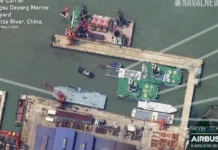
By Andrew Carr*
The release of the 2024 National Defence Strategy (NDS) in April revealed a dividing line within Australia’s strategic and defence community. The line is between Defence and the ADF, which have a new way of thinking about strategy, and those who remain attached to an old way of thinking from the early post–Cold War years. The Australian Strategic Policy Institute. The Strategist.
At the heart of everything the NDS does is the need to solve a small number of specific problems. Those problems, identified through the net assessment process recommended by the 2023 Defence Strategic Review (DSR), define what the ADF is supposed to do, what equipment it should have and how it should be organised. They’re the basis on which we should judge whether and when it’s fit for purpose.
Since the early 2000s, Australian strategy has tried to grapple with a strategic environment that first slowly, then rapidly, went badly astray. Major documents in 2003, 2005, 2007, 2009, 2013, 2016 and 2020 all tried to describe what was going on and to identify Australian principles and interests. Where possible, they also listed the kinds of equipment the ADF sought and the budget it would be provided.
Although the approach focusing on ends, ways and means reflected thinking about ‘good strategy’ by many in the US and Britain and by leading scholars around the world, its results were often anything but. As Lawrence Freedman observes in The New Makers of Modern Strategy, strategy in the post-Cold War era became a sort of higher calling,producing endless aspirational statements of goals, principles and values. However, it was rarely clear how the opening essays about the world directly led to the specific dollars quoted or capability acquired.
During the Post-Cold War era governments wanted options, using the ADF as a tool to tackle everything from rebuilding stability and state capacity in the Pacific to counterterrorism operations in the Middle East, chasing illegal fishers in the Antarctic and mopping up after floods in Queensland. National commentary likewise often resembled a form of retail therapy, urging the ADF to buy whatever was new and popular. Ukraine is using FPV drones? We must have more of that. Israel used the F-35 effectively? Let’s insist on another squadron.
The 2023 DSR called time on these poorly structured ways of thinking.
A better approach, which harks back to Cold War strategists such as George Kennan and Andrew Marshall, is beginning to replace the old one in Australian defence processes. We don’t need our strategic documents to tell us that we want peace and prosperity. We don’t need them to motivate us to work with allies or to defend democracy. We need strategy because the world confronts us with serious, complex problems, and strategy is one of the best tools we have for solving those problems.
Where the old way of thinking about strategy tried to be comprehensive and declaratory, the new approach is specific and pragmatic. It realises that we can’t solve all of the world’s problems, but that some problems are more important than others. Some problems, when properly addressed, allow us to make progress elsewhere. And through that steady process—fixing, hardening, reaffirming and aligning—we can directly improve our security and wellbeing.
The government demanded meaningful solutions from the ADF for the handful of problems at the core of the 2024 NDS. The specific list is very tightly classified, although we can probably guess some of the government’s concerns. The ADF is tasked with becoming a focused force designed in its policy frameworks and equipment acquisitions to directly solve these problems. Doing so will help us to manage the threat of China’s aggression, respond to potential crises in our region and mitigate some of the costs of a regional conflict.
‘Strategy as problem solving’ shifts the emphasis from declaring our principles to diagnosing our problems. The key work of Australian strategists in the years to come will be twofold: to identify which problems are most important, based on their significance, the likelihood of harm and how we might resolve them; and to interrogate their dynamics, understanding why they’re so hard and where leverage points may be found to seek better patterns of order.
The post-Cold War era view that strategy was about asserting principles and applyingresources was never very effective and has badly failed us in today’s era of great-power competition and disruption. Through the 2023 DSR and the 2024 NDS, Australia has begun to shift to a better way of thinking about strategy. Only by recognising strategy as problem solving can the full strengths and challenges of Australia’s new approach to security be properly understood.



